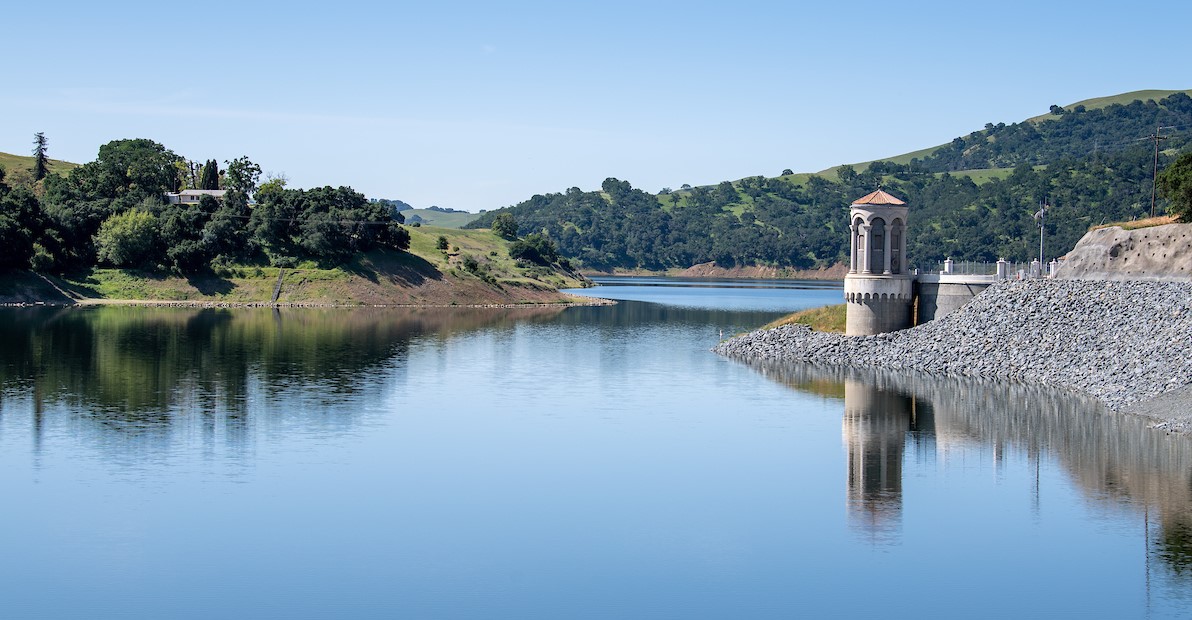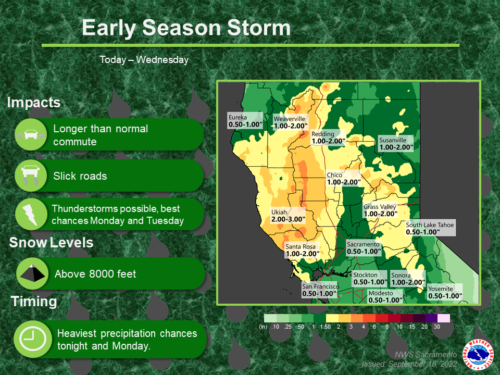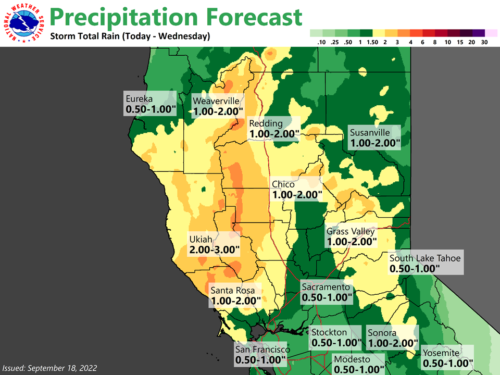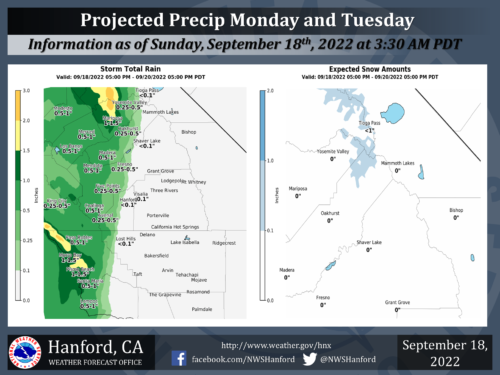In California water news this weekend …
West Coast storm to bring drought relief, an early taste of winter
“While Southern California has been on the receiving end of multiple rounds of rain in recent days and weeks, continued dry weather in the northern two-thirds of the state has led to persistent drought conditions, as well as numerous wildfires. However, AccuWeather forecasters say a potent storm system will stall offshore for a couple days and allow for a steady soaking rain in Northern California. For a select few areas at high elevations, a bit of wet snow may even be possible. The culprit is an area of low pressure over the Pacific Ocean, which has been slowly strengthening in recent days. As this low pressure system gradually moves inland during the first few days of the week, it will bring moist Pacific air inland with it, providing the ingredients necessary for widespread rain for much of the Golden State. “In Central and Northern California, rainfall may be heavy at times. On top of that, it should be a slow-moving feature, with rain lasting for a prolonged period of time in many areas,” AccuWeather Senior Meteorologist Mike LeSeney explained. … ” Read more from AccuWeather here: West Coast storm to bring drought relief, an early taste of winter
Beneficial rains will slow California fires but only temporarily, experts say
“A new storm system will arrive on the West Coast this weekend, bringing beneficial rain to northern and central California. Some experts believe the storm could bring enough rain to the region to slow the ongoing fire season. Against the odds, an early and substantial rain event appears likely for much of Northern California later this weekend, Daniel Swain, a climate scientist with UCLA tweeted. He went on to say the event could lead to the “fire season slowing” across California, at least temporarily. “If we can get through the Saturday-Sunday southwest wind event, things will likely be looking much better on [the] Mosquito Fire by Monday,” Swain tweeted. ... ” Read more from CNN here: Beneficial rains will slow California fires but only temporarily, experts say
Southern California wastes a lot of water despite historic drought. But it can teach the Bay Area one big lesson
“When it comes to wasting water amid historic drought, Californians are good at pointing fingers. Last month, criticism was showered on Hollywood’s elite, including Sylvester Stallone, Kim Kardashian and Kevin Hart, who were accused of using water excessively. Some celebrity households consumed thousands of gallons of water per day during particularly dry times, bolstering Southern California’s reputation for recklessly indulging in big lawns, pools and shiny, clean cars. But given the bad rap that Southern California gets, is the Bay Area really that much better at stewarding its water? Well, it depends on how you look at the issue. … where the Bay Area tends to lag other parts of the state, experts say, is in developing and diversifying where it gets its water. …” Read more from the San Francisco Chronicle here: Southern California wastes a lot of water despite historic drought. But it can teach the Bay Area one big lesson
State to hold virtual hearings on embattled Delta Tunnel project Sept. 22 & 28 as public weighs in
Dan Bacher writes, “The California Department of Water Resources, or DWR, recently released the Draft Environmental Impact Report for its Delta Conveyance Project, better known in the region as the controversial Delta Tunnel, for public review and comment. The public comment period will end on Oct. 27, leaving less than six weeks for Californians to get their comments in. The proposed 45-mile-long tunnel would divert water from the Sacramento River before it reaches the Delta, and then ship it underground so that it’s ultimately delivered to San Joaquin Valley agribusiness and to Southern California water agencies. There are several ways to submit public comment on the Draft EIR, including by email, comment form, regular mail or at a virtual public hearing, according to DWR. … ” Read more from the Sacramento News & Review here: State to hold virtual hearings on embattled Delta Tunnel project Sept. 22 & 28 as public weighs in
‘An accident waiting to happen’: Attorney general announces $8 million settlement over Safeway gas station risks
“Safeway’s 71 gas stations in California lack protections against potentially disastrous underground fuel leaks, and the company will pay $8 million as part of a settlement with the state and county governments, Attorney General Rob Bonta announced Friday. The company, which sells gasoline from stations at its Safeway and Vons supermarkets, has also agreed to install equipment to detect, prevent and contain spills and leaks, Bonta said at a news conference. He said the stations’ underground systems have been defective since at least March 2015 but so far, no spills or leaks are known to have occurred. … ” Read more from the San Francisco Chronicle here: ‘An accident waiting to happen’: Attorney general announces $8 million settlement over Safeway gas station risks
SEE ALSO: Safeway reaches settlement following allegations of environmental violations across California, from KCRA Channel 3
Could pulling water out of thin air help Californians beat the drought?
“California’s latest plan to increase the state’s water supply focuses on conservation, recycling wastewater, producing new water through desalination and capturing storm water. But there also are those who want to invest in atmospheric water generation. What is atmospheric water generation? It’s quite literally pulling water out of thin air. And David Hertz in Malibu has figured out how to do it quite efficiently. … ” Read more from KABC here: Could pulling water out of thin air help Californians beat the drought?
Another California exodus: Dairy cows leave for greener pastures in Texas, Arizona as farms squeezed
“Michael Oosten’s grandparents were dairy farmers in the Netherlands and immigrated to California in the 1920s, starting their own dairy farm in Paramount in 1945 before relocating to bigger farms in Artesia and Bellflower. In the early 1970s, they moved their farm to Chino, but decided to sell it in 2001 to a trucking company located next to an Amazon warehouse, which was built on land comprised of two other dairy farms. Oosten, who for 18 years has owned Marvo Holsteins dairy farm in Lakeview, which supplies milk to Land O’Lakes, said dairy farming has declined in California since the industry’s peak in 2008. The industry has been hurt by shrinking real estate in Southern California, more affordable land in other states, rigorous permitting processes and the shortage of water and other natural resources. “Economics is the biggest driver of farmers leaving to go out of state,” Oosten said. “Milk pricing tends to be very competitive in other states; the feed prices are lower and the regulatory environment is better.” … ” Read more from the LA Times here: Another California exodus: Dairy cows leave for greener pastures in Texas, Arizona as farms squeezed
Court rules Water Code Section 1052(a) did not allow state to curtail pre-1914 water rights based on 2015 drought conditions
“The first appellate court to consider a case regarding California’s curtailments of senior water rights held that the State Water Resources Control Board (“State Water Board” or “Board”) lacked authority under Water Code section 1052(a) to curtail pre-1914 water rights based on the unavailability of water for use under such rights. The curtailment cases began in 2015, in the middle of a multi-year drought, when the State Water Board curtailed the exercise of many water rights across the state in an effort to implement the priority system arising from California’s water laws. During a drought water shortage, the priority system allocates available water supplies according to the relative priority of competing rights, with lower-priority rights getting no water in order to protect higher-priority rights. The 2015 curtailments included some pre-1914 appropriative water rights, which are relatively high-priority because they were established before the state legislature created the State Water Board’s predecessor agency to regulate water rights in California. … ” Read more from the Kronick law firm here: Court rules Water Code Section 1052(a) did not allow state to curtail pre-1914 water rights based on 2015 drought conditions
Reviewing the effects of wildfires on water quality
“As wildfire occurrences have increased, as do the pollutants from burned watersheds in the water. This was noted by researchers in a review paper that indicates the requirement for more research in this field. LeDuc is a coauthor of the new paper published in Water Resources Research, AGU’s journal for original research on the mobility and organization of Earth’s water.The paper emphasizes the water trends after wildfires as reported through 184 scientific papers from 1980. They found that stream flow usually increases following a wildfire, along with sediments and water temperature. Often, nutrients also increased, as well as some organic chemicals and toxic metals, which often reach concentrations up to 10 to 100 times higher than pre-fire levels. … ” Read more from AZO CleanTech here: Reviewing the effects of wildfires on water quality
California governor signs sweeping climate legislation
“Gov. Gavin Newsom signed a sweeping package of bills Friday to expand California’s reliance on clean energy and reduce carbon emissions, moves he said further establish the state as a global climate leader. The new laws include proposals aimed at reducing exposure to gas and oil pollution in communities of color, expanding clean energy jobs and accelerating the state’s timeline for getting most of its electricity from renewable energy sources. Newsom signed them following a record-breaking heat wave that forced California to rely more heavily on natural gas for its electricity production. “We could talk about the way the world should be and protest it,” Newsom said while standing underneath an array of solar panels. “Or we can actually make demonstrable progress.” … ” Read more from US News & World Report here: California governor signs sweeping climate legislation
In people news this weekend …
Los Vaqueros Reservoir Joint Powers Authority selects Taryn Ravazzini as first Executive Director
 “Following an extensive recruitment process, the Board of Directors (Board) of the Los Vaqueros Reservoir Joint Powers Authority (JPA) has selected T. Ravazzini Consulting and its principal, Taryn Ravazzini, as its first Executive Director. Ravazzini has more than 18 years of experience managing water resources planning and policy implementation in California. The Board unanimously approved her contract at its regular meeting on September 14, 2022. “Taryn is the ideal leader to guide the expansion of Los Vaqueros to provide water supply reliability for the region and environmental benefits in the Sacramento-San Joaquin Bay-Delta (Delta) and San Joaquin Valley. She brings extensive experience managing complex policies, planning, and investment to address California water challenges,” said Board President Angela Ramirez Holmes. “The JPA is launching a new period of investment and construction and Taryn is the right person to lead this project across the finish line.” … ” Continue reading from the Los Vaqueros Reservoir Joint Powers Authority here: Los Vaqueros Reservoir Joint Powers Authority selects Taryn Ravazinni as first Executive Director
“Following an extensive recruitment process, the Board of Directors (Board) of the Los Vaqueros Reservoir Joint Powers Authority (JPA) has selected T. Ravazzini Consulting and its principal, Taryn Ravazzini, as its first Executive Director. Ravazzini has more than 18 years of experience managing water resources planning and policy implementation in California. The Board unanimously approved her contract at its regular meeting on September 14, 2022. “Taryn is the ideal leader to guide the expansion of Los Vaqueros to provide water supply reliability for the region and environmental benefits in the Sacramento-San Joaquin Bay-Delta (Delta) and San Joaquin Valley. She brings extensive experience managing complex policies, planning, and investment to address California water challenges,” said Board President Angela Ramirez Holmes. “The JPA is launching a new period of investment and construction and Taryn is the right person to lead this project across the finish line.” … ” Continue reading from the Los Vaqueros Reservoir Joint Powers Authority here: Los Vaqueros Reservoir Joint Powers Authority selects Taryn Ravazinni as first Executive Director
Dr. Lisa Wainger becomes Chair of the Delta Independent Science Board
 “Dr. Lisa Wainger led her first meeting today as chair of the Delta Independent Science Board. Chair Wainger will guide the Delta ISB for the next two years as they continue promoting independent, peer-reviewed science to support Sacramento-San Joaquin Delta decision-making. “I’m excited to be chairing this Board, particularly with this set of members whose intellects I am deeply impressed by,” said Chair Wainger. “I want to help the Board find its comparative advantage, increase awareness of social science and its benefits, and widen our already open door to diversify the voices heard as we consider the risks and issues facing the Delta.” Chair Wainger succeeds Dr. Stephen Brandt, who completed his second two-year term as chair of the Board on August 31, 2022. … ” Read more from the Delta Stewardship Council here: Dr. Lisa Wainger becomes Chair of the Delta Independent Science Board
“Dr. Lisa Wainger led her first meeting today as chair of the Delta Independent Science Board. Chair Wainger will guide the Delta ISB for the next two years as they continue promoting independent, peer-reviewed science to support Sacramento-San Joaquin Delta decision-making. “I’m excited to be chairing this Board, particularly with this set of members whose intellects I am deeply impressed by,” said Chair Wainger. “I want to help the Board find its comparative advantage, increase awareness of social science and its benefits, and widen our already open door to diversify the voices heard as we consider the risks and issues facing the Delta.” Chair Wainger succeeds Dr. Stephen Brandt, who completed his second two-year term as chair of the Board on August 31, 2022. … ” Read more from the Delta Stewardship Council here: Dr. Lisa Wainger becomes Chair of the Delta Independent Science Board
Yurok Forestry Director becomes first Native woman appointed to State Board of Forestry and Fire Protection
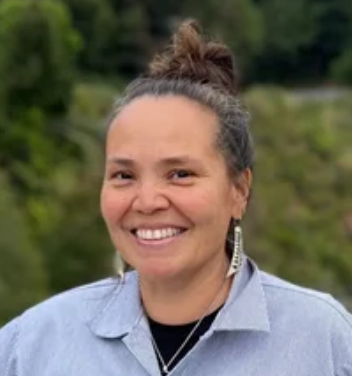 “On Tuesday evening, California Governor Gavin Newsom appointed Yurok Tribe’s Forestry Department Director Dawn Blake to the State Board of Forestry and Fire Protection. “It is an honor to be appointed by Governor Newsom to serve on the State Board of Forestry and Fire Protection. My traditional upbringing, university education and professional career have prepared me for the opportunity to manage the state’s natural resources on behalf of all state residents,” Blake said. “Placing a Native American land manager on the Board of Forestry and Fire Protection is a win for California and the many tribal nations within the state,” added Yurok Chairman Joseph L. James. “We strongly encourage the Senate to approve the appointment.” … ” Read more from the Lost Coast Outpost here: Yurok Forestry Director becomes first Native woman appointed to State Board of Forestry and Fire Protection
“On Tuesday evening, California Governor Gavin Newsom appointed Yurok Tribe’s Forestry Department Director Dawn Blake to the State Board of Forestry and Fire Protection. “It is an honor to be appointed by Governor Newsom to serve on the State Board of Forestry and Fire Protection. My traditional upbringing, university education and professional career have prepared me for the opportunity to manage the state’s natural resources on behalf of all state residents,” Blake said. “Placing a Native American land manager on the Board of Forestry and Fire Protection is a win for California and the many tribal nations within the state,” added Yurok Chairman Joseph L. James. “We strongly encourage the Senate to approve the appointment.” … ” Read more from the Lost Coast Outpost here: Yurok Forestry Director becomes first Native woman appointed to State Board of Forestry and Fire Protection
Through dry years and wet – and multiple lawsuits – retiring Bakersfield City water leader met challenges cheerfully
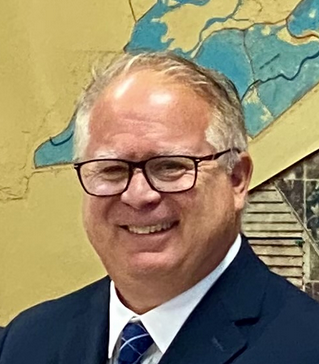 “Art Chianello, who has led Bakersfield’s Water Resources Department through two of the state’s worst droughts and one of its wettest years on record, is retiring at the end of September. Most municipal water departments are fairly quiet operations. As long as water comes out of taps, not many people pay attention. But the Bakersfield water department is in the unique position of also tracking and managing flows on the Kern River – a highly contentious piece of water – which it partly owns. So, while Chianello oversaw the city’s growing domestic water systems, he was also smack in the middle of nearly every ongoing Kern River legal controversy. ... ” Read more from SJV Water here: Through dry years and wet – and multiple lawsuits – retiring Bakersfield City water leader met challenges cheerfully
“Art Chianello, who has led Bakersfield’s Water Resources Department through two of the state’s worst droughts and one of its wettest years on record, is retiring at the end of September. Most municipal water departments are fairly quiet operations. As long as water comes out of taps, not many people pay attention. But the Bakersfield water department is in the unique position of also tracking and managing flows on the Kern River – a highly contentious piece of water – which it partly owns. So, while Chianello oversaw the city’s growing domestic water systems, he was also smack in the middle of nearly every ongoing Kern River legal controversy. ... ” Read more from SJV Water here: Through dry years and wet – and multiple lawsuits – retiring Bakersfield City water leader met challenges cheerfully
Podcasts …
BLUE DOT PODCAST: ECOSTRESS and Mono Lake
Host Dave Schlom checks out the findings from a new NASA instrument flying aboard the International Space Station called ECOSTRESS. The instrument provides data on how water (and the lack thereof) is affecting our planet’s vegetation and soils. In the second half of the show, we focus on Mono Lake and how it is being pummeled by both the drought and the drawing off of water from its tributary streams by the city of Los Angeles. San Francisco Chronicle environment reporter Kurtis Alexander talks about his investigation of how alkali dust, being exposed as the lake level drops, is leading to some of the worst air pollutions in the nation and Mono Lake Committee Executive Director explains some of the environmental challenges being faced by the ancient, saline eastern Sierra lake.
DAIRY DEFINED PODCAST: California water crisis challenges dairy, Vanden Heuvel says
Water is front-of-mind for California dairy farmers, as scarcity is threatening to change the industry structure of the top U.S. dairy-producing state. While successful adjustments to a lower-water future are possible, the state badly needs moisture in the next few months to stave off greater immediate hardship for milk producers and improved government policy to help dairy prosper in the longer term, said Geoff Vanden Heuvel, director of regulatory and economic affairs for the California-based Milk Producers Council.
WATER IS A MANY SPLENDOR’ED THING PODCAST: We Have An Opportunity
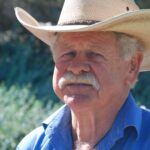 As the population in California grows and drier years of precipitation become more frequent, groundwater is becoming a limited resource. This presents a problem because 40% to 60% of California’s water supply comes from groundwater. So now what do we do? Water is a Many Splendor’ed Thing brings you another water relationship that has a personally significant impact to your life. Podcast produced by Steven Baker, Bringing People Together to Solve Water Problems, water@operationunite.co, 530-205-6388
As the population in California grows and drier years of precipitation become more frequent, groundwater is becoming a limited resource. This presents a problem because 40% to 60% of California’s water supply comes from groundwater. So now what do we do? Water is a Many Splendor’ed Thing brings you another water relationship that has a personally significant impact to your life. Podcast produced by Steven Baker, Bringing People Together to Solve Water Problems, water@operationunite.co, 530-205-6388
WATER LOOP PODCAST: Latino leaders learn
Despite the direct and often disproportionate impacts of water problems on Latinos in California, there was historically a lack of water knowledge and advocacy by the leaders in their communities. That led to the creation of an organization to educate and motivate Latino local elected officials across the state. This level of government is the closest to the people and the solutions, as discussed in this episode with Victor Griego, President and Founder of Water Education For Latino Leaders. Victor explains how the organization focuses on inspiring Latino leaders to care about water issues and giving them the leadership and storytelling skills necessary to create change.
A STORY YOU HAVEN’T HEARD PODCAST: The art of adaptation
The Erdman family knows a thing or two about adapting. Many people can make adjustments when conditions are optimal, but when faced with real adversity, that is when one’s character is revealed. The Erdman story begins in 1920. Kim’s grandfather, Fritz Erdman, suffered a traumatic loss when his mother was struck and killed by a train in the family’s home state of Oklahoma. Fritz and his father were in need of a fresh start, so the family packed up and moved out west to live near his uncle who farmed land in Glenn County.
WE GROW CALIFORNIA: Doheny Ocean Desalination Project – is it time yet?
In Orange County California, there is an ocean desalination project that uses slant-well technology, that is environmentally sensitive and works. So why has it taken twenty years to move it forward? Is this the right time for the Doheny Ocean Desalination Project to finally move forward? Listen in as we welcome Rick Shintaku, General Manager of South Coast Water District as he provides an overview of the project, timeline, hurdles, and upcoming milestones.
LANDSCAPE PODCAST: Closing the nature gap in Southern California
The proposed Western Riverside National Wildlife Refuge would protect around 340,000 acres southeast of Los Angeles in southern California, helping preserve habitat for around 150 native species—over 30 of which are endangered—as well as green space for the county’s largely Latino population. Riverside County is currently one of the fastest growing regions in the country, with housing and development replacing agricultural fields and open space every day. That means the county’s residents are quickly losing access to nature. The refuge would help preserve and restore green space close to underprivileged communities, giving residents a safe and educational way to get outside. Hear more about the proposed Western Riverside National Wildlife Refuge from Brenda Gallegos and Juan Rosas of the Hispanic Access Foundation, which is involved in pushing for the establishment of the refuge.
In regional water news this weekend …
NORTH COAST
Drought forces closure of Shasta Valley Wildlife Area to waterfowl hunting; other northeastern waterfowl properties impacted by water shortages
“The California Department of Fish and Wildlife (CDFW) has announced that the Shasta Valley Wildlife Area in Siskiyou County will be closed to waterfowl hunting for the entirety of the 2022-23 season as a result of lost wetlands and waterfowl habitat due to ongoing drought conditions. The Northeastern Zone waterfowl season runs from October 1, 2022, through January 11, 2023. The Shasta Valley Wildlife Area closure includes the preseason Northeastern Zone Youth Waterfowl Hunting Days scheduled for September 17-18, 2022, and the postseason Veterans and Active Military Personnel Waterfowl Hunting Days scheduled for January 14-15, 2023. … ” Read more from the Department of Fish & Wildlife here: Drought forces closure of Shasta Valley Wildlife Area to waterfowl hunting; other northeastern waterfowl properties impacted by water shortages
Eel River: Altered male fish could be key to controlling invasive pikeminnow
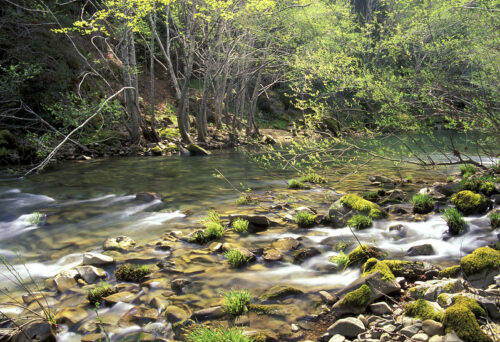 “Rafael Cuevas Uribe wants to rid the Eel River of all female Sacramento pikeminnows in order to help the river’s salmon population. Cuevas Uribe and Andre Buchheister, professors of Fisheries Biology at Cal Poly Humboldt, were recently awarded a $150,000 grant from CalTrout, a non-profit conservation group, to help eliminate the invasive species from the Eel River. They were awarded an additional $67,000 from the California State University Agricultural Research Institute and $40,000 from the Bureau of Land Management (BLM) to support their project. Buchheister says two graduate students, and possibly some undergraduate volunteers, will be involved in the work. Cuevas Uribe and Buchheister hope to use an aquaculture method of breeding fish that could result in a population of all male fish, keeping the pikeminnow from being able to continue to reproduce. The Trojan Y strategy modifies the genetics of the fish to produce YY males. The researchers will first test the technique in the lab and create models for how it might play out in an actual river population. … ” Read more from Humboldt State University here: Altered male fish could be key to controlling invasive pikeminnow
“Rafael Cuevas Uribe wants to rid the Eel River of all female Sacramento pikeminnows in order to help the river’s salmon population. Cuevas Uribe and Andre Buchheister, professors of Fisheries Biology at Cal Poly Humboldt, were recently awarded a $150,000 grant from CalTrout, a non-profit conservation group, to help eliminate the invasive species from the Eel River. They were awarded an additional $67,000 from the California State University Agricultural Research Institute and $40,000 from the Bureau of Land Management (BLM) to support their project. Buchheister says two graduate students, and possibly some undergraduate volunteers, will be involved in the work. Cuevas Uribe and Buchheister hope to use an aquaculture method of breeding fish that could result in a population of all male fish, keeping the pikeminnow from being able to continue to reproduce. The Trojan Y strategy modifies the genetics of the fish to produce YY males. The researchers will first test the technique in the lab and create models for how it might play out in an actual river population. … ” Read more from Humboldt State University here: Altered male fish could be key to controlling invasive pikeminnow
Improvements are coming to the Arcata wastewater treatment facility
“The California Coastal Commission has approved the city of Arcata’s proposed upgrades to their wastewater treatment facility. The current infrastructure is from the 80s and in need of major improvements. This will be one of the largest infrastructure projects the city of Arcata has undertaken in recent years and officials are confident it will greatly benefit the community. The project has been in the works for over a decade. officials saying that the city’s coastal location has prevented the large-scale improvements from moving forward as fast as they would like. We talked to the Director of Environmental Services for the city of Arcata, Emily Sinkhorn, about the proposed improvement plan. … ” Read more from Channel 3 here: Improvements are coming to the Arcata wastewater treatment facility
MOUNTAIN COUNTIES
Researchers are using an underwater glider in Lake Tahoe to study the impact of Mosquito Fire smoke
“This time last week, the Mosquito Fire burning in Placer and El Dorado counties had started to send huge plumes of smoke high into the air. Researchers in the Lake Tahoe area had been watching the fire carefully. When it became clear that smoke would soon cloud the Tahoe Basin, they moved quickly to deploy a special robotic glider, designed to track changes in the lake as smoke conditions worsened. Alex Forrest is a lead scientist in this research, which is supported by the UC Davis Tahoe Environmental Research Center. He said smoke contains all kinds of microscopic particles that can end up in the water. “The smoke itself carries a fair bit of nitrogen, and so it deposits nutrients into the water,” Forrest said. “It also will put particle pollution into the water.” ... ” Read more from KCRA here: Researchers are using an underwater glider in Lake Tahoe to study the impact of Mosquito Fire smoke
SACRAMENTO VALLEY
Tehama County Commentary: A little background on the ag well stuff
Liz Merry writes, ” … A little background on the ag well stuff — at the supervisors meeting of Oct. 5, 2021, an urgency ordinance was presented that would have placed a temporary moratorium on new ag well permits. The already permitted wells would still be able to go in. Not enough, but something at least. A long line of citizens spoke for and against the ordinance, including members of the Groundwater Commission, who assured us they were working on an ordinance to address this issue. Almost a year has gone by and we have seen no such document from the Groundwater Commission. Almost a year later, there are hundreds more people with no water coming out of their taps, and the commission has instead been writing regulations to make any new wells less harmful to their neighbors. And that’s great, really. But it does nothing to help the dry well folks. Where is that moratorium you said you were working on, commissioners? … ” Read more from the Red Bluff Daily News here: Commentary: A little background on the ag well stuff
Nearly 40,000 pounds of trash cleared from American River parkway during cleanup
“More than 1,200 volunteers on Saturday gathered to pick up trash on the American River parkway, from Discovery Park in Sacramento to Black Miner’s Bar in Folsom. The annual Great American River Cleanup is organized by the American River Parkway Foundation, a nonprofit founded in 1983. “We really appreciate the love that the Sacramento community shows for the parkway,” said Scot Murdoch, the foundation’s director of communications. As of Saturday afternoon, Murdoch said that they were close to hitting their goal of 40,000 pounds of trash collected. … ” Read more from the Sacramento Bee here: Nearly 40,000 pounds of trash cleared from American River parkway during cleanup
NAPA/SONOMA
With rain in forecast, State Water Board lifts a third of Russian River restrictions
 “The outlook for rain has prompted state water regulators to lift restrictions on about a third of the Russian River water rights curtailed earlier this summer due to limited supplies in Lake Mendocino and the rest of the system. The State Water Resource Control Board is restoring 294 water rights in the watershed as of Saturday because of a storm expected to bring up to 2½ inches of precipitation to upper elevations beginning Saturday night. The board’s staff expects next week to revisit the status of the remaining 596 water rights still curtailed after Saturday to see how much rainfall materializes and how it’s affecting the watershed, said Sam Boland-Brien, supervising engineer with the Division of Water Rights. … ” Read more from the Santa Rosa Press Democrat here: With rain in forecast, state water board lifts a third of Russian River restrictions
“The outlook for rain has prompted state water regulators to lift restrictions on about a third of the Russian River water rights curtailed earlier this summer due to limited supplies in Lake Mendocino and the rest of the system. The State Water Resource Control Board is restoring 294 water rights in the watershed as of Saturday because of a storm expected to bring up to 2½ inches of precipitation to upper elevations beginning Saturday night. The board’s staff expects next week to revisit the status of the remaining 596 water rights still curtailed after Saturday to see how much rainfall materializes and how it’s affecting the watershed, said Sam Boland-Brien, supervising engineer with the Division of Water Rights. … ” Read more from the Santa Rosa Press Democrat here: With rain in forecast, state water board lifts a third of Russian River restrictions
Russian River water restrictions add to region’s woes as drought rages on
“Hundreds of water rights holders in the Russian River watershed have been ordered to stop drawing from the river and its tributaries as the state struggles through its third year of debilitating drought conditions. The State Water Resources Control Board publishes a new list every month of water rights holders who must reduce or completely stop taking water from the watershed. For September, the list consists of 509 water rights holders — collectively holding 845 water rights — and includes individuals, farmers, ranchers and drinking water systems. While this weekend’s anticipated storm could ease some restrictions, the latest list is a dramatic increase from the late June orders for 88 rights holders but a reduction from the early August orders that affected 671 rights holders. … ” Read more from KRON here: Russian River water restrictions add to region’s woes as drought rages on
BAY AREA
Bay Area braces for rare September rainstorm after grueling heat, drought
“Rain will likely douse the Bay Area on Sunday, a dramatic shift for residents recovering from a record heat wave, in the heart of wildfire season and a years-long drought. Though cities throughout the region enjoyed mild sunshine on Saturday, the wind picked up in the afternoon, lashing tree branches and window blinds. Clouds gathered over Oracle Park in San Francisco’s Mission Bay neighborhood, as the Giants played the Los Angeles Dodgers. A storm that generated weeks of tantalizing forecasts had finally arrived. ... ” Read more from the San Francisco Chronicle here: Bay Area braces for rare September rainstorm after grueling heat, drought
As dead fish pile up, the economic and environmental impact of the red tide becomes apparent
“Thousands of dead fish have washed up on shores across the Bay Area in recent weeks. A red tide is killing everything from anchovies to sharks. Preventing a similar disaster may cost the region billions of dollars. In late July, Mary Spicer noticed that the water lapping around her kayak started to turn red. A few weeks later it was dark brown. “All of a sudden … you could no longer see through the water,” said Spicer, who paddles several times a week on San Francisco Bay. She says she has never seen a red tide or algal bloom like this year’s. “None of the marine people I know — the rowers, the paddlers, the sailors — are comfortable with what’s happening right now.” The National Oceanic and Atmospheric Administration describes red tides as a “harmful algal bloom,” or large colonies of algae plants growing out of control that are sometimes rust-colored. Not all algal blooms are harmful, and most are beneficial in the ocean. However, a small percentage of algae can produce deadly blooms. … ” Read more from KQED here: As dead fish pile up, the economic and environmental impact of the red tide becomes apparent
EPA visits San Francisco Bay to celebrate the 50th anniversary of the Clean Water Act, highlight investment in communities
“Today in North Richmond, California, U.S. Environmental Protection Agency (EPA) Assistant Administrator for the Office of Water Radhika Fox joined EPA Regional Administrator for the Pacific Southwest Martha Guzman, California Secretary for Environmental Protection Yana Garcia, Contra Costa County Supervisor John Gioia, and other state and local leaders for the California stop on the 50th Anniversary of the Clean Water Act celebration tour. “When Congress passed the Clean Water Act in 1972—with an overwhelming bipartisan majority—it charted a new path for America’s waters. As a result, we have seen transformational progress over the last 50 years—waters that were once polluted are now economic engines, treasured habitats, and recreational attractions,” said EPA Assistant Administrator for Water Radhika Fox, “The progress made in the San Francisco Bay, and the benefit that has had on communities throughout the region, show how investing in water resources is investing in people. Through the Bipartisan Infrastructure Law, President Biden and Congress have committed to protecting our vital water resources for the 50 years and beyond.” … ” Read more from the EPA here: EPA visits San Francisco Bay to celebrate the 50th anniversary of the Clean Water Act, highlight investment in communities
Column: Not Marin Municipal Water District’s place to critique Civil Grand Jury’s concerns
Columnist Dick Spotswood writes, “One of Marin County’s most respected institutions is the Civil Grand Jury. It’s correctly perceived as being above politics. Jurors are volunteers that diligently do their own homework and have no agenda except promoting excellent, honest local government. That’s why it was disappointing to see some Marin Municipal Water District directors blow off the Civil Grand Jury’s well-thought June report, “A Roadmap to Water Resilience for Marin Municipal Water District.” Three points from the report explain why MMWD directors weren’t smiling when they read the jury’s findings. … ” Read more from the Marin Independent Journal here: Column: Not Marin Municipal Water District’s place to critique Civil Grand Jury’s concerns
SF Supervisors unhappy with city’s lack of action to protect Bayview-Hunters Point residents from toxic sea level rise
“A committee of San Francisco supervisors Thursday challenged Mayor London Breed’s assertion that the city understands the risk of climate change-related flooding in the Bayview-Hunters Point neighborhood. Members of the Government Audit and Oversight Committee reviewed a June report from the San Francisco Civil Grand Jury that confirmed what Bayview-Hunters Point residents have been saying: The city is not acting fast enough on how sea level rise could surface legacy toxic contamination and spread it in neighborhoods near the Cold War-era naval shipyard. The former Navy shipyard, located on the city’s southeast shoreline, is an 866-acre federal Superfund site, meaning it’s a location the U.S. Environmental Protection Agency has designated as highly contaminated with hazardous waste. Along this bayshore edge of Bayview-Hunters Point, where radioactive contamination remains buried in the soil, lies one of the most polluted areas of the entire San Francisco Bay shoreline. … ” Read more from KQED here: SF Supervisors unhappy with city’s lack of action to protect Bayview-Hunters Point residents from toxic sea level rise
CENTRAL COAST
California Coastal Commission sets date for Cal Am desalination hearing
“For years, California American Water Co. has been trying to get its application to construct a desalination plant for the Monterey Peninsula in front of regulators, and come November it will be. The Coastal Commission’s decision to hold the hearing comes at a time when Gov. Gavin Newsom is putting on a full-court press to get new water projects built in the state. “Gov. Newsom knows very well the water issues of our entire state and understands that coastal communities are fortunate to have ocean water as a resource to solve our water challenges,” said Josh Stratton, the manager of external affairs for Cal Am. “It makes no sense not to approve a project such as ours with a proven track record of safety and success that utilizes slant well technology, which protects sea life. … ” Read more from the Monterey Herald here: California Coastal Commission sets date for Cal Am desalination hearing
Commentary: State Sen. John Laird: Clock is ticking on our water problem
State Sen. John Laird writes, “As Tuesday’s Regional Water Forum before the Monterey County Board of Supervisors nears and in the third year of the current California drought, the challenge of sustainable, permanent water for Monterey County remains daunting. Recent developments offer an opportunity to ground-truth various perspectives and provide new incentive to bring everyone to the table. For the short-term, I am pleased to have helped get specific drought items in the state budget for Monterey County water agencies $6.8 million in valve replacement projects for the Nacimiento and San Antonio Dams, which will allow for accessing water at lower levels in those reservoirs in the driest of times, and $4.8 million for an additional well for Pure Water Monterey, which will allow for more water to be injected and pulled out from that project. As good of news as these allocations are – long-term water security for Monterey County is more complicated and will cost much more ... ” Read the full commentary at the Monterey Herald here: Commentary: State Sen. John Laird: Clock is ticking on our water problem
Two opportunities to get involved in protecting our coastline and waterways
“David Schmalz here, thinking about the local coast, and how lucky we are to live in one of the world’s most beautiful places, where stunning views and awe-inspiring marine life are there for us to appreciate whenever we make time for it (see: sea lion mania happening right now at Fisherman’s Wharf). In order for it to stay that way, however, it’s also incumbent upon locals to do their part in the ways they both can and enjoy. And in the coming days, there are two excellent ways to do that. The first is tomorrow, Saturday Sept. 17, where from 9am-noon the nonprofit Save Our Shores is hosting a beach cleanup at more than 60 cleanup sites across the coast and watersheds of the Monterey Bay National Marine Sanctuary, including several in Monterey County. … Another event next week is something I’ve never participated in: NOAA is doing a “first flush” training for locals so that it can enlist an army of citizen scientist volunteers to take water quality samples before the first rain, and then followup samples following the first rain of the season, aka the “first flush.” … ” Read more from Monterey Weekly here: Two opportunities to get involved in protecting our coastline and waterways
Desalination buoys may provide Vandenberg Space Force Base with fresh water
“A Santa Barbara company is working with Vandenberg Space Force Base to place high-tech buoys offshore that would process seawater into fresh water and pipe it ashore as a dependable water supply amid the ongoing drought. SeaWell LLC is hoping to place its unmanned ocean desalination buoys offshore from Space Launch Complex-1, the base’s first launching facility which is no longer used. It will be the site of the onshore water station because of its close proximity to the shore. SeaWell’s subsidiary, Ocean Portal Water Co., is putting the project together. It’s not clear how many SeaWell buoys Ocean Portal intends to install, although a diagram of the project shows three buoys. … ” Read more from the Lompoc Record here: Desalination buoys may provide Vandenberg Space Force Base with fresh water
Oxnard drought efforts succeeding
“The Public Works & Transportation Committee, Tuesday, September 13, received an update about Oxnard’s Drought Response Actions and how the situation looks moving forward. The State Water Project (SWP), which supplies the Metropolitan Water District (MWD), has been severely affected by the drought, so the district has placed restrictions and volumetric goals on SWP users, including the Calleguas Municipal Water District, that change frequently. Assistant Public Works Director Joseph Marcinko presented the update video and noted that City Staff is working diligently to comply with all restrictions and goals. … ” Read more from the Tri-County Sentry here: Oxnard drought efforts succeeding
SAN JOAQUIN VALLEY
Unusual storm will bring rain, cooler days to Stanislaus region. How much rainfall?
“Early season rainfall and cooler temperatures are expected this weekend in the drought-stricken Northern San Joaquin Valley. The storm is hardly a drought-buster and it won’t signal an end to the wildfire season. But the change in weather is unusual for Modesto, which normally gets less than a quarter inch of rain in September. A strong storm hitting Alaska will affect Northern and Central California and could bring rain totals of 1 inch to 1.25 inches to Modesto over a four-day period, a forecaster said. … ” Read more from the Modesto Bee here: Unusual storm will bring rain, cooler days to Stanislaus region. How much rainfall?
SOUTHERN CALIFORNIA
Valencia homeowner at odds with HOA over drought-tolerant landscape rules
“A homeowner at North Park in Valencia says he reached out to his homeowner’s association with an application to put in a drought-tolerant garden, but says his application was delayed and ultimately rejected by the board. A representative from the HOA says any changes to the outside of your house have to follow a specific set of rules. Steve Goodman is one of the original homeowners in the North Park community – a place he has called home for the last 25 years. He says he’s very aware of California’s water crisis and he wanted to do something to help. His plan was to replace his lawn with rocks, a drip system, and desert plants. … ” Read more from KTLA here: Valencia homeowner at odds with HOA over drought-tolerant landscape rules
Santa Clarita resident captures 35 gallons of rain as part of city program to conserve water
“Heavy rain from tropical storm Kay pounded Santa Clarita recently, and one resident made the most of it with a city provided rain barrel in her front yard. “We connected a flexible pipe to the downspout that goes directly into the barrel, and just in that little bit of rain that we had last night and over the weekend, my barrel is full,” said Stacy Fortner, a homeowner in Valencia. The rain water filled up her entire 35 gallon bucket. Now that water can be used around the house instead of tap water. “We can use that for flushing our toilets in an emergency. We can use it for watering house plants, washing our cars,” said Fortner. … ” Read more from KABC 7 here: Santa Clarita resident captures 35 gallons of rain as part of city program to conserve water
Want to enjoy your swimming pool while still conserving water? Expert shares tips
“This summer, going into a pool to cool off from the heat seems like a good idea, but with California’s water crisis, is there a way to conserve water while still being able to enjoy the pool? Here are a few ways to conserve water when it comes to pool care, according to Tim Summerfield, the general manager at Pool Guard of LA. Summerfield said a pool cover could save pool owners a lot of money. “That’s the biggest cost of owning a pool, actually paying for the water, because 70% of water just gets evaporated,” Summerfield said. … ” Read more from ABC 7 here: Want to enjoy your swimming pool while still conserving water? Expert shares tips
Exploring LA’s history with water
“More than 4 million people across LA County continue to be affected by a 15-day outdoor watering ban that began last week so crews can make critical repairs to a pipeline that carries water from the Colorado River. The ban came a couple of months after a larger restriction went into place in Southern California this summer, limiting outdoor watering to two days a week as the state conditions to experience a historic drought. The region, and LA in particular, has always had a troubled history with water, according to the University of Southern California professor William Deverell. “Inside the Issues” host Alex Cohen spoke to Deverell about how in the early days of Los Angeles, residents got most of their water from the LA River. ... ” Read more from Spectrum 1 here: Exploring LA’s history with water
Cleanup day in Orange County stops trash in its tracks before reaching the open ocean
“Thousands of volunteers spanned out from urban creeks to sandy beaches and beyond with the same mission – to help keep the coast clean. The collective effort in Orange County on Saturday, Sept. 17, was part of the larger California Coastal Cleanup Day, which also coincides with International Coastal Cleanup Day, making it the largest volunteer effort on the planet. Helpers not only scoured the sand to remove debris, but also parks, watersheds, rivers and lakes throughout the region as part of the Inner Coastal Cleanup, a way to stop trash before it washes down watersheds and into the ocean, where it becomes a threat to marine life and habitat. The beaches needed the extra help, especially after the tropical storm that raged through the region a week ago, sending rain that washed trash from streets and sewers and toward the ocean. Many beaches this week had trash littering the waterline as the first big flush in months swept debris to the coast. … ” Read more from the OC Register here: Cleanup day in Orange County stops trash in its tracks before reaching the open ocean
IMPERIAL/COACHELLA VALLEYS
Palm Desert approves $1 million for CVWD turf rebate program to promote water conservation
“Palm Desert is offering its residents more money to switch to drought-tolerant landscaping through a Coachella Valley Water District rebate program, becoming the valley’s second city to recently promote turf replacement amid California’s historic dry spell. The Palm Desert City Council approved a partnership with CVWD on Thursday that will double the reimbursement available through CVWD’s rebate program for residents who opt to replace their lawns with landscaping better suited for droughts. The council allocated an initial $1 million for the program, and also authorized the city manager to use an additional $500,000 if the first round of funding runs out. … ” Read more from the Desert Sun here: Palm Desert approves $1 million for CVWD turf rebate program to promote water conservation
SAN DIEGO
Tijuana can only supply water to 10% of its population
“Due to its natural conditions, the city of Tijuana only has the capacity to supply water to 200,000 inhabitants, that is, only 10% of the current population, said Hernando Durán Cabrera, director of Tijuana Verde. He mentioned that although the Tijuana River basin extends from the top of the town of El Hongo, located in Tecate, the rain that falls is insufficient for the more than two million inhabitants of the city. “We don’t have water because the water cycle doesn’t give us any,” Durán Cabrera pointed out. … ” Read more from the Mexico Daiily Post here: Tijuana can only supply water to 10% of its population
Along the Colorado River …
The Colorado River is drying up — but basin states have ‘no plan’ on how to cut water use
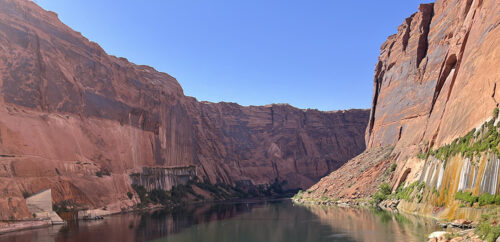 “One month after states missed a federal deadline to propose ways to drastically cut their use of water supplied by the Colorado River, water managers who met for a seminar in Grand Junction said they still didn’t have comprehensive solutions ready to help bolster the imperiled river system. Water leaders, agricultural producers, environmentalists and others from across the drought-stricken river basin met Friday for the Colorado River District’s annual water seminar to discuss the historic-low levels in the river’s biggest reservoirs — and the need to cut back usage from Wyoming to California. While the problems the basin faces were apparent in the day-long discussions about the state of the river, solutions were not. … ” Read more from Colorado Public Radio here: The Colorado River is drying up — but basin states have ‘no plan’ on how to cut water use
“One month after states missed a federal deadline to propose ways to drastically cut their use of water supplied by the Colorado River, water managers who met for a seminar in Grand Junction said they still didn’t have comprehensive solutions ready to help bolster the imperiled river system. Water leaders, agricultural producers, environmentalists and others from across the drought-stricken river basin met Friday for the Colorado River District’s annual water seminar to discuss the historic-low levels in the river’s biggest reservoirs — and the need to cut back usage from Wyoming to California. While the problems the basin faces were apparent in the day-long discussions about the state of the river, solutions were not. … ” Read more from Colorado Public Radio here: The Colorado River is drying up — but basin states have ‘no plan’ on how to cut water use
On the Colorado River, growing concern for trout and chub
“To guide fishing trips for a year or two, that’s what brought Terry Gunn to the red canyons of northern Arizona. The chance to hike, raft and fly fish drew Wendy Hanvold, a retired ski bum, who took a job there waiting tables at an anglers lodge. She heard rumors of the intrepid fishing guide who had just returned from an Alaska trip, and one day when he came in, she approached his table to take his order. “You fly fish, right?” she said. “I’ve always wanted to learn.” It was a match made in Marble Canyon. Since then, the couple opened an anglers shop, guide service, purchased a lodge, and raised their son. They take pride in showing tourists the best spots to catch and release prized rainbow trout beneath craggy cliffs carved by the Colorado River. But it could all soon change as warmer water temperatures threaten fish survival and the Gunn’s livelihood. … ” Read more from Channel 4 here: On the Colorado River, growing concern for trout and chub
ADWR Director and CAP General Manager give grim assessment of Colorado River conditions
“Wednesday’s online presentation of the Arizona Capitol Times’ “Morning Scoop on Water Issues in Arizona” served up an hour-long assessment of how the State’s water supply is faring during the current, epic drought conditions. Some of the news, like that from Leslie Meyers, the newly appointed Associate General Manager & Chief Water Resources Executive for Salt River Project, included refreshing good news. The in-state SRP water supply is in good shape, she reported. But, as anticipated, most of the Morning Scoop discussion focused on the strained Colorado River system. The Morning Scoop panelists – including ADWR Director Tom Buschatzke and Central Arizona Project General Manager Ted Cooke – could report very little that could be considered upbeat. … ” Read more from the Arizona Department of Water Resources here: ADWR Director and CAP General Manager give grim assessment of Colorado River conditions
O’Halleran blasts deal between State Land Department and Saudi company
“Arizona Congressman Tom O’Halleran is blasting the Arizona State Land Department for allowing a Saudi Arabian company to pump unlimited amounts of groundwater from an area west of Phoenix. According to O’Halleran, the deal with Fondomonte in Butler Valley involves no oversight from the state, which isn’t charging the correct market base rates for the leased land. The company is growing water-intensive alfalfa for export in order to feed its cows in the Middle East. … ” Read more from KNAU here: O’Halleran blasts deal between State Land Department and Saudi company
Commentary: Lake Mead water problem solved
Nevada US Senate Candidate, Barry Cameron Lindemann, proposes the solution to refill Lake Mead and solve the Colorado River water problem: “No disappearing act has ever been slower than the 20-year gradual ebbing of water levels in Lake Mead, Nevada. As people begin handwringing about climate change and receding water in the reservoir, and they should, they are missing what the real problem is with the lake’s slow death. … The use of government in our lives should be sparse, but this time it is robustly warranted. Since it currently appears the Bureau of Reclamation is floundering with indecision, then below is a framework for restoring the water in Lake Mead, Lake Powell, and the Flaming Gorge Reservoir. … ” Read more from EIN here: Commentary: Lake Mead water problem solved
Q&A: A Colorado River veteran moves upstream and plunges into the drought-stressed river’s mounting woes
“Chuck Cullom is used to responding to myriad challenges that arise on the Colorado River. But this summer problems on the drought-stressed river are piling up at a dizzying pace: Reservoirs plummeting to record low levels, question of whether Hoover Dam and Glen Canyon Dam can continue to release water and produce hydropower and unprecedented water cuts. As executive director of the Upper Colorado River Commission, Cullom brings an unusual perspective to the growing list of challenges. Cullom spent the last two decades viewing issues on the river through a Lower Basin lens, managing drought strategies and mitigation plans for the Central Arizona Project. Now, in his first year at the commission, Cullom has the chance to use his dual-basin perspective to help the seven states and 30 federally recognized tribes hash out ways to address the river’s woes. … ” Read more from Western Water here: Q&A: A Colorado River veteran moves upstream and plunges into the drought-stressed river’s mounting woes
The upstream water used to keep Lake Powell afloat is running out
“Upstream reservoirs in the Colorado River Basin might not have enough water to keep Lake Powell above a critical threshold indefinitely, federal officials have warned in recent weeks, as the West’s ongoing megadrought saps water from across the West. The Flaming Gorge reservoir on the Green River, which this year is releasing a huge amount of water downstream to help Lake Powell, may only have enough water left for two more similar emergency releases, US Bureau of Reclamation officials told CNN, though they have yet to fully model the situation. Federal officials took emergency steps in May to use water from upstream reservoirs to boost Lake Powell’s level and buy the surrounding communities more time to plan for the likelihood the reservoir will soon fall too low for the Glen Canyon Dam to generate hydropower. ... ” Read more from CNN here: The upstream water used to keep Lake Powell afloat is running out
In national water news this weekend …
$1,000,000,000 now available to state, local & tribal entities for cybersecurity planning & improvement
“$1Bn is now available to state, local and tribal (SLT) entities to shore up their cybersecurity vulnerabilities under the State and Local Cybersecurity Grant Program (SLCGP) announced on Friday, September 16th by the U.S. Department of Homeland Security (DHS) in a Notice of Funding Opportunity (NOFO). The funds come through the Infrastructure Investment and Jobs Act signed into law by President Biden in November 2021. They are intended to help SLTs strengthen their cybersecurity technology, fend off the increasing barrage of ransomware attacks, protect critical infrastructure and foster local partnerships to reduce cyber risks across SLTs. The Federal Emergency Management Agency’s (FEMA) grant administration expertise will be employed to help the Cybersecurity and Infrastructure Security Agency (CISA) release $185M of these funds for program development by the end of 2022 and continue over the next four years. … ” Read more from Nossaman LLP here: $1,000,000,000 now available to state, local & tribal entities for cybersecurity planning & improvement
Sacketts seek new WOTUS test. It may not help them.
“In three weeks, an Idaho couple will make their case to the Supreme Court that EPA improperly claimed oversight of a wetland on their property — a move that has for 15 years halted construction of their dream home near idyllic Priest Lake. But some legal observers note that Chantell and Michael Sackett’s land may be subject to EPA permitting requirements, even if the justices adopt a more limited interpretation of the Clean Water Act’s scope. “Even if the court is chomping at the bit to roll back federal jurisdiction, it doesn’t seem that Sackett is the one,” said Pat Parenteau, emeritus professor at Vermont Law and Graduate School, before the justices agreed to take up the case. At the heart of Sackett v. EPA is a longstanding legal battle over the definition of waters of the U.S., or WOTUS, a term that describes which wetlands and streams are automatically subject to Clean Water Act protections. A broader definition of WOTUS allows EPA to exercise control over more of the nation’s waters; a narrower interpretation curbs the agency’s power. ... ” Read more from E&E News here: Sacketts seek new WOTUS test. It may not help them.

